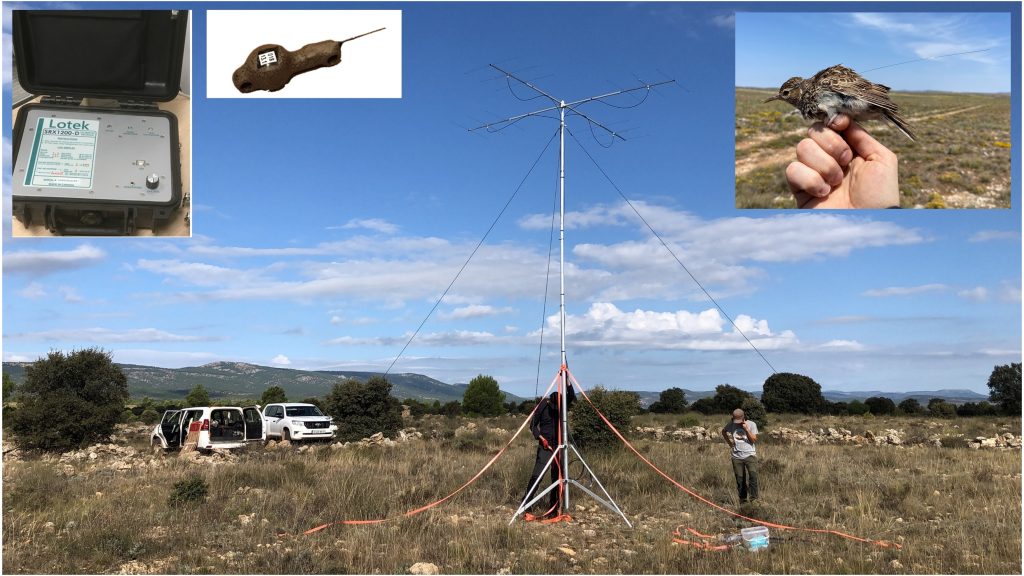
Due to the scarce and elusive nature of the Dupont’s lark, the tracking method cannot rely solely on observations. Its detectability outside the breeding season is very low, and its singing activity mainly occurs in the first hour before dawn.
In this regard, remote tracking using radio telemetry proves to be an effective tool.
The method we employ for tracking translocated individuals and controls (those remaining in the source population) involves marking the birds with VHF radio transmitters encoded Coded (NTQB2-4-2 Coded nanotag weighing 0.9 g; Lotek Wireless Inc., Canada) and installing fixed automatic signal reception stations.
Unlike classic VHF or Beeper transmitters, these devices all transmit on the same frequency but with different pulses, and they have much greater durability than classic transmitters, making them especially suitable for the objectives outlined in the present project.
In each translocation area and in the source zones, a fixed automatic radio tracking station has been installed. This station is set up at a central and elevated point in the area to facilitate the reception of the signal from the coded marked animals.
Each station consists of a receiver, four Yaggi antennas with 3 elements each (programmed with a central frequency of 150.100 MHz), four coaxial cables, and a power supply. The optimal receivers for this type of tracking are the SRX1200-D by Lotek (Lotek Wireless Inc., Canada), which directly decode the IDs of the encoded transmitters, generating a database of detections.
The antennas are anchored to a mast of at least 6 meters in height, placed at the same level and at 90-degree separation. Each receiver is connected to a 12V battery to power the system and a solar panel to provide autonomy to the battery for 2 weeks. Each receiver is connected to a modem with a mobile data card to enable remote connectivity.

